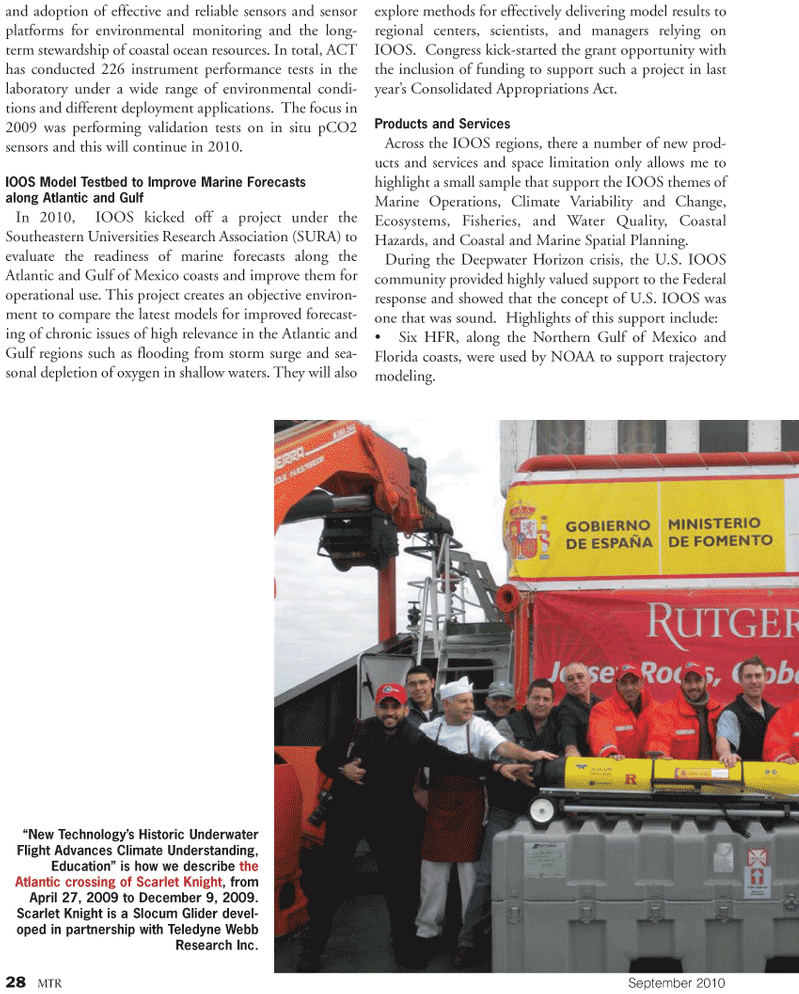
Page 28: of Marine Technology Magazine (September 2010)
Ocean Observation
Read this page in Pdf, Flash or Html5 edition of September 2010 Marine Technology Magazine
28 MTR September 2010 and adoption of effective and reliable sensors and sensor platforms for environmental monitoring and the long- term stewardship of coastal ocean resources. In total, ACT has conducted 226 instrument performance tests in the laboratory under a wide range of environmental condi- tions and different deployment applications. The focus in 2009 was performing validation tests on in situ pCO2 sensors and this will continue in 2010.
IOOS Model Testbed to Improve Marine Forecasts along Atlantic and Gulf
In 2010, IOOS kicked off a project under the
Southeastern Universities Research Association (SURA) to evaluate the readiness of marine forecasts along the
Atlantic and Gulf of Mexico coasts and improve them for operational use. This project creates an objective environ- ment to compare the latest models for improved forecast- ing of chronic issues of high relevance in the Atlantic and
Gulf regions such as flooding from storm surge and sea- sonal depletion of oxygen in shallow waters. They will also explore methods for effectively delivering model results to regional centers, scientists, and managers relying on
IOOS. Congress kick-started the grant opportunity with the inclusion of funding to support such a project in last year’s Consolidated Appropriations Act.
Products and Services
Across the IOOS regions, there a number of new prod- ucts and services and space limitation only allows me to highlight a small sample that support the IOOS themes of
Marine Operations, Climate Variability and Change,
Ecosystems, Fisheries, and Water Quality, Coastal
Hazards, and Coastal and Marine Spatial Planning.
During the Deepwater Horizon crisis, the U.S. IOOS community provided highly valued support to the Federal response and showed that the concept of U.S. IOOS was one that was sound. Highlights of this support include: • Six HFR, along the Northern Gulf of Mexico and
Florida coasts, were used by NOAA to support trajectory modeling. “New Technology’s Historic Underwater
Flight Advances Climate Understanding,
Education” is how we describe the
Atlantic crossing of Scarlet Knight, from
April 27, 2009 to December 9, 2009.
Scarlet Knight is a Slocum Glider devel- oped in partnership with Teledyne Webb
Research Inc.

 27
27

 29
29
